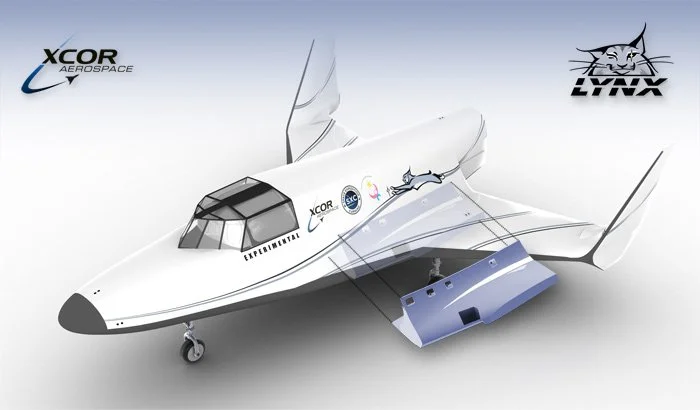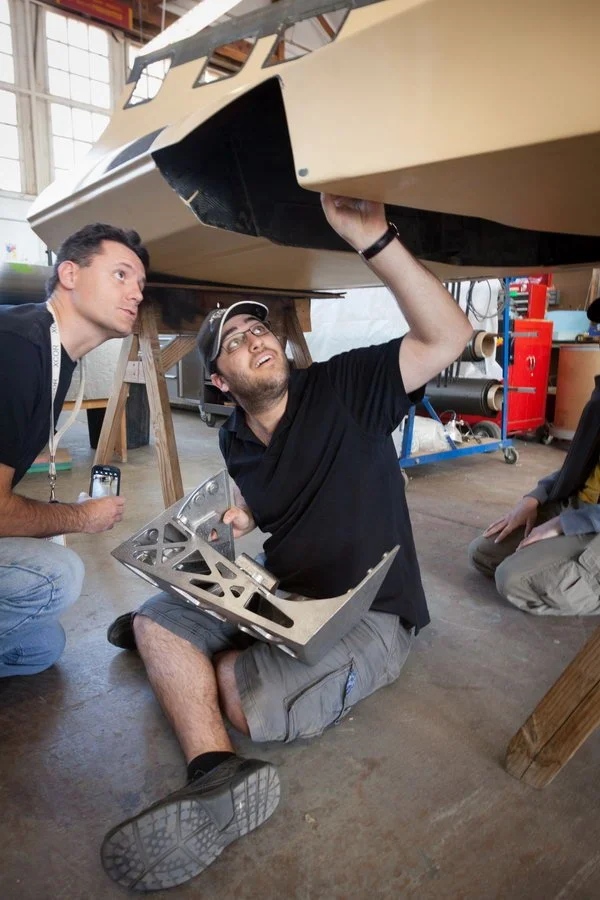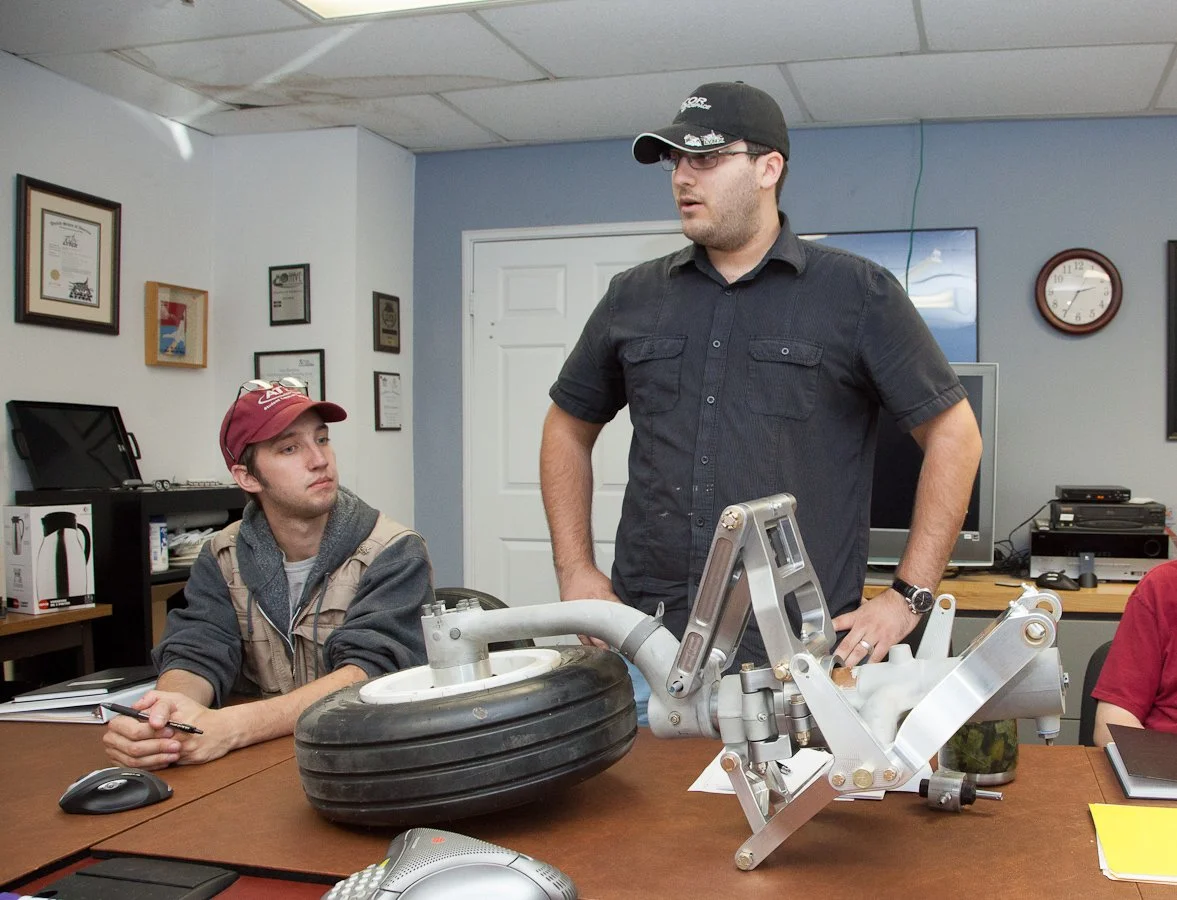Follow the Build: Strake Update
We kick back into gear on subsystem updates in an interview with Brandon Litt. Among his other responsibilities, Brandon is in charge of the Lynx strakes.
The strakes are the large structural sections of the airframe just inboard of the wings. They are the primary structure that attaches the wings to the spacecraft, and each strake (one on the port side, the other on the starboard side) contains the following: four kerosene fuel tanks, the main landing gear, and two reaction control thrusters that will control the Lynx when outside of the Earth’s atmosphere.
Above, left to right: Engineers Mike Valant and Brandon Litt prepare to test fit a custom titanium beam into the Lynx strake.
BC: So what’s the status of the strakes right now?
BL: Well we have both port and starboard side strakes in house.
Currently we are working on some final carbon fiber layups. Things like fabricating closeouts for the access hatches, landing gear bay doors, etc.
BC: What does that mean?
BL: In several locations around the strakes we’ve got these large access penetrations where we can reach inside and do plumbing or electrical work on the vehicle.
These holes need to be closed-out so we have a smooth aerodynamic shape. The doors will be flush with the skin and can be removed for vehicle maintenance. You could also call them access panels.
BC: What comes after that? What does it take to get us to flight?
BL: After that we are progressing on to main gear installation, and then final vehicle integration.
First, each main gear assembly needs to be attached to the strakes. The gear will be hanging from custom designed titanium beams that are mounted inside of the strakes. The picture above shows me and my colleague Mike Valant doing a test fit of the titanium beam in the port side strake.
Brandon Litt reviews landing gear status with the XCOR Lynx team at a recent Lynx structures meeting.
Once the gear is installed, we will perform tests of the retract and deploy mechanism. We will cycle the landing gear multiple times to ensure it works properly. The landing gear kinematics are quite complicated, and it’s imperative that the entire system works as it was designed.
So we will get a lot of hours on that, make sure everything works correctly and go from there.
After that, we have to go about installing the strakes onto the rest of the vehicle structure– attaching them onto the fuselage and tying them in with further carbon fiber layups.
The Lynx structure is primarily built from carbon fiber cloth infused with an epoxy resin. This allows the structure to be very stiff, while still being light enough to fly to space. Each structural component on the Lynx (except for the wings) will need to be bonded to each other. Carbon fiber cloth is then physically laid-up over the joints between components to transfer the flight loads throughout the entire structure.
In some locations we will also be using mechanical fasteners (bolts) to reinforce these joints.
After the strakes are firmly attached, we are in the home stretch. We can begin doing things like plumbing the fuel tanks, wiring the electrical system, doing the final checkouts of the landing gear system and all of the other stuff that will ensure flight readiness.
BC: What was the hardest part of the strake build?
BL: The hardest part? Well, because you’re working with carbon fiber and epoxy, you have to build all four of these fuel tanks and the related attach points for the parts mentioned above, at the same time.
Then you close it all out and bake it in an oven. Hopefully the parts haven’t shifted and moved in the process. And hopefully, when you’re done, you have a part that works (we do!).
BC: Can you walk us through what the next steps are with the strakes as of today?
BL: The next steps are to attach the strakes to the fuselage center section, start plumbing the fuel and electrical lines and the reaction control thrusters and install the main landing gear.
I have to say that it’s a very exciting time for us. After two and a half years of work on the strake design, staring at the part on a computer and doing the math, I actually get to see everything come together in front of me. I couldn’t ask for more. All of our engineers are doing this at XCOR – designing, building and testing real hardware on real spacecraft. There is nothing better! I would encourage every engineer out there, who wants to really build things, to check out our job openings online. The Lynx is a very exciting program to work on, and is only the first step on XCOR’s journey. I look forward to seeing where it leads!


